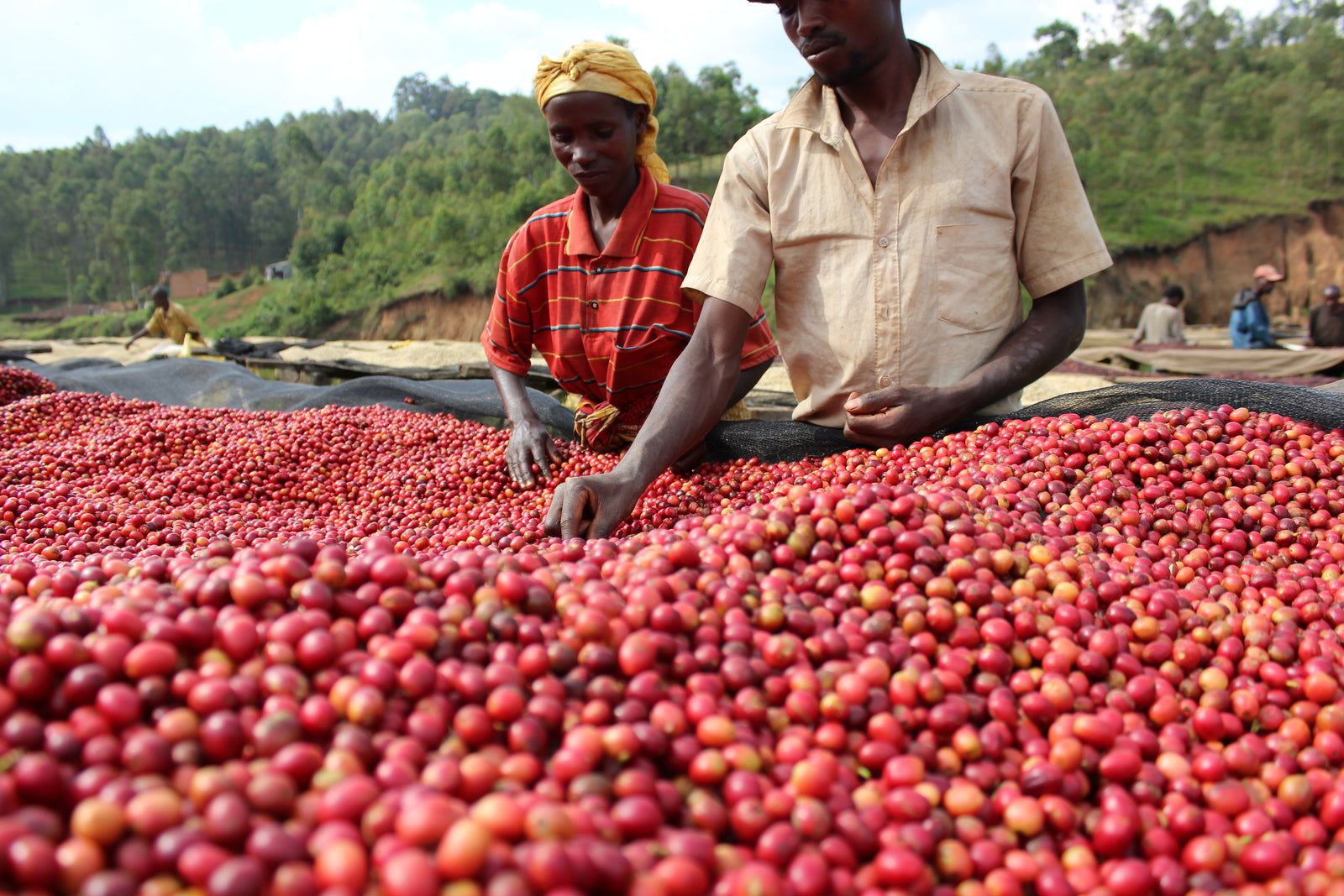
The coffee industry is a global project sustained by just about every nation around the world. And within the expanse of coffee-growing regions across the continents, specialty coffee is growing at a rapid rate, with ever-improving systems of production, education, and demand for quality.
At Padre Coffee, we work with farmers in some of the world’s leading coffee-growing regions - featuring a rotating roster of exciting single origins. This blog will introduce specialty coffee lovers to a selection of key coffee-growing countries that produce beans that can be found at Padre Coffee.
Want to skip right to the good stuff? Shop our Single Origin Collection.

Key coffee growing regions:
Sidamo, Limu, Jima, Ghimbi/Lekempti, Harrar, and Yirgacheffe.
Typical flavour profile:
Ethiopian coffee flavours are particularly diverse, featuring tropical fruit and citrus flavours.

Kavutiri Factory, Murue Farmers Cooperative, Kenya. Photo courtesy of Cafe Imports.
Key coffee growing regions:
Nyeri, Murang’a, Kirinyaga, Embu, Meru, Kiambu, Machakos, Makuru, Kisii, Trans-Nzoia, Keyo, and Marakwet.
Typical flavour profile:
Kenyan coffees are bright, complex and fruity. They’re also very well known for their bold acidity.

Fazenda Alta Vista, Carmo de Minas. Photo courtesy of Cafe Imports.
For over 150 years, Brazil has been the largest exporter of coffee, growing around one third of the world’s total production. Although a large portion of the country’s export goes to commercial buyers, specialty coffee has taken off in recent years. Local specialty coffee producers are meticulously growing, picking and processing their lots and producing high quality coffee signified by its acidity and increased body.
Key coffee growing regions:
Bahia, Chapada Diamantina, Cerrado De Bahia/West Bahia, Planalto De Bahia, Minas Gerais, Cerrado, Sul De Minas, Chapada De Minas, Matas De Minas, São Paulo, Mato Grosso and Mato Grosso Do Sul, Espirito Santo, and Paraná.
Typical flavour profile:
Brazilian coffees feature sweet, chocolate and nutty flavours. They are also usually heavy in body and low in acidity.

To coffee lovers, Colombia is synonymous with good coffee. The country has well-defined farming regions that span across 900,000 hectares of land with most farms harvesting twice yearly. It is estimated that there are more than 550,000 coffee growing families in Colombia with their harvests being responsible for 16% of the country’s annual agricultural GDP.
Key coffee growing regions:
Cauca, Valle Del Cauca, Tolima, Huila, Quindío, Risaralda, Nariño, Caldas, Antioquia, Cundinamarca, Santander, North Santander, and Sierra Nevada.
Typical flavour profile:
Across Colombia, you will find a broad spectrum of flavours. Depending on the region, you will find rounder, chocolatier coffees through to sweet, jammy and fruity notes.

Alto San Juan, Costa Rica. Image courtesy of Cafe Imports.
In the last 20 years, Costa Rica’s reputation for quality coffee has been raised to a new level with more farmers investing in small-scale harvesting equipment. It’s common for coffee producers to own their own farms - often small to medium in size - which has improved Costa Rica’s reputation for traceability. As a result, the demand for Costa Rican coffee has dramatically increased in the world of specialty coffee.
Key coffee growing regions:
Central Valley, West Valley, Tarrazu, Tres Rios, Orosi, Brunca, Turrialba, and Guanacaste.
Typical flavour profile:
Costa Rican coffees are bright, clean, balanced and highly aromatic. They are both fruity and chocolatey.

Indonesian coffee farmers picking ripe cherries at Bali Beans Coffee and Roastery, Belok/Sidan, Badung Region, Bali. Image courtesy of Delightin Dee via Unsplash
Indonesia is not only one of Asia’s biggest producers of coffee, but also features an expansive range of microclimates across its lands, resulting in some of the most surprising coffee flavour profiles. Although Indonesia’s specialty coffee has often been overlooked, improvements to the domestic supply-chain and local growth in coffee consumption is gradually leading to a boom in specialty coffee production.
Key coffee growing regions:
Sumatra, Java, Sulawesi, Flores, and Bali.
Typical flavour profile:
Depending on how the beans are processed, Indonesian coffees can be heavy bodied, earthy, woody and spicy with low acidity.
Padre Coffee acknowledges the Traditional Custodians of Country throughout Australia and their continued connections to land, sea and community.
We pay our respect to Elders past, present and future, and extend that respect to all Aboriginal and Torres Strait Islander Peoples.